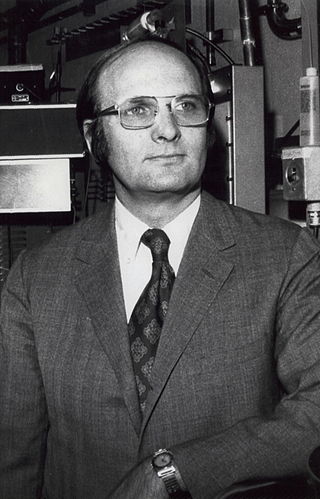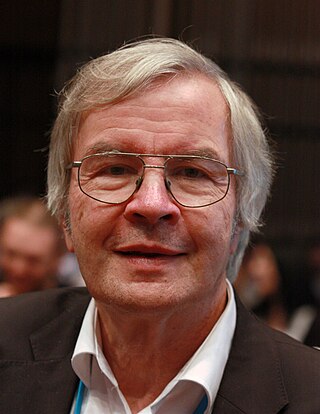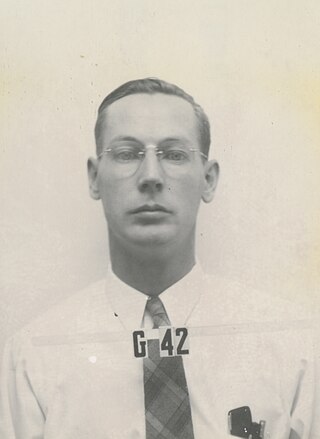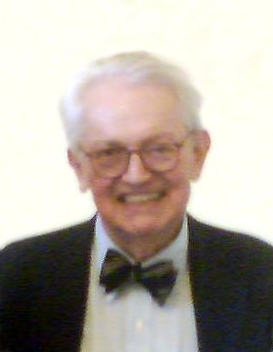
The Nobel Prize in Physics is a yearly award given by the Royal Swedish Academy of Sciences for those who have made the most outstanding contributions for humankind in the field of physics. It is one of the five Nobel Prizes established by the will of Alfred Nobel in 1895 and awarded since 1901, the others being the Nobel Prize in Chemistry, Nobel Prize in Literature, Nobel Peace Prize, and Nobel Prize in Physiology or Medicine. Physics is traditionally the first award presented in the Nobel Prize ceremony.

The American Astronomical Society is an American society of professional astronomers and other interested individuals, headquartered in Washington, DC. The primary objective of the AAS is to promote the advancement of astronomy and closely related branches of science, while the secondary purpose includes enhancing astronomy education and providing a political voice for its members through lobbying and grassroots activities. Its current mission is to enhance and share humanity's scientific understanding of the universe as a diverse and inclusive astronomical community.

Charles Hard Townes was an American physicist. Townes worked on the theory and application of the maser, for which he obtained the fundamental patent, and other work in quantum electronics associated with both maser and laser devices. He shared the 1964 Nobel Prize in Physics with Nikolay Basov and Alexander Prokhorov. Townes was an adviser to the United States Government, meeting every US president from Harry S. Truman (1945) to Bill Clinton (1999).

Leon N. Cooper is an American physicist and Nobel Prize laureate who, with John Bardeen and John Robert Schrieffer, developed the BCS theory of superconductivity. His name is also associated with the Cooper pair and the BCM theory of synaptic plasticity.

John Robert Schrieffer was an American physicist who, with John Bardeen and Leon Cooper, was a recipient of the 1972 Nobel Prize in Physics for developing the BCS theory, the first successful quantum theory of superconductivity.

Deborah Shiu-lan Jin was an American physicist and fellow with the National Institute of Standards and Technology (NIST); Professor Adjunct, Department of Physics at the University of Colorado; and a fellow of the JILA, a NIST joint laboratory with the University of Colorado.

Paul Ching Wu Chu is a Chinese-American physicist specializing in superconductivity, magnetism, and dielectrics. He is a professor of physics and T.L.L. Temple Chair of Science in the Physics Department at the University of Houston College of Natural Sciences and Mathematics. He was the president of the Hong Kong University of Science and Technology from 2001 to 2009. In 1987, he was one of the first scientists to demonstrate high-temperature superconductivity.

John Norris Bahcall was an American astrophysicist and the Richard Black Professor for Astrophysics at the Institute for Advanced Study. He was known for a wide range of contributions to solar, galactic and extragalactic astrophysics, including the solar neutrino problem, the development of the Hubble Space Telescope and for his leadership and development of the Institute for Advanced Study in Princeton.

Clinton Joseph Davisson was an American physicist who won the 1937 Nobel Prize in Physics for his discovery of electron diffraction in the famous Davisson–Germer experiment. Davisson shared the Nobel Prize with George Paget Thomson, who independently discovered electron diffraction at about the same time as Davisson.

Raymond Davis Jr. was an American chemist and physicist. He is best known as the leader of the Homestake experiment in the 1960s-1980s, which was the first experiment to detect neutrinos emitted from the Sun; for this he shared the 2002 Nobel Prize in Physics.

Theodor Wolfgang Hänsch is a German physicist. He received one-third of the 2005 Nobel Prize in Physics for "contributions to the development of laser-based precision spectroscopy, including the optical frequency comb technique", sharing the prize with John L. Hall and Roy J. Glauber.

Erwin Louis Hahn was an American physicist, best known for his work on nuclear magnetic resonance (NMR). In 1950 he discovered the spin echo.

Charles L. Bennett is an American observational astrophysicist. He is a Bloomberg Distinguished Professor, the Alumni Centennial Professor of Physics and Astronomy and a Gilman Scholar at Johns Hopkins University. He is the Principal Investigator of NASA's highly successful Wilkinson Microwave Anisotropy Probe (WMAP).

William Duane was an American physicist who conducted research on radioactivity and X-rays and their usage in the treatment of cancer. He developed the Duane-Hunt Law and Duane's hypothesis. He worked with Pierre and Marie Curie in their University of Paris laboratory for six years and developed a method for generating quantities of radon-222 "seeds" from radium for usage in early forms of brachytherapy.
John Clarke is a British physicist and a Professor of Experimental Physics at University of California at Berkeley.

Donald William Kerst was an American physicist who worked on advanced particle accelerator concepts and plasma physics. He is most notable for his development of the betatron, a novel type of particle accelerator used to accelerate electrons.

Charles Pence Slichter was an American physicist, best known for his work on nuclear magnetic resonance and superconductivity.

Peter Pitirimovich Sorokin was an American Russian physicist and co-inventor of the dye laser. He was born in Boston and grew up in Winchester, Massachusetts. He attended Harvard University, receiving a BA degree in 1952 and a PhD in Applied Physics in 1958; his PhD thesis adviser was Nicolaas Bloembergen.

Maw-Kuen Wu is a Taiwanese physicist specializing in superconductivity, low-temperature physics, and high-pressure physics. He was a professor of physics at University of Alabama in Huntsville, Columbia University, and National Tsing Hua University, the Director of the Institute of Physics at Academia Sinica, the president of the National Dong Hwa University, and is currently a distinguished research fellow of the Institute of Physics, Academia Sinica, and international member of National Academy of Sciences.

















